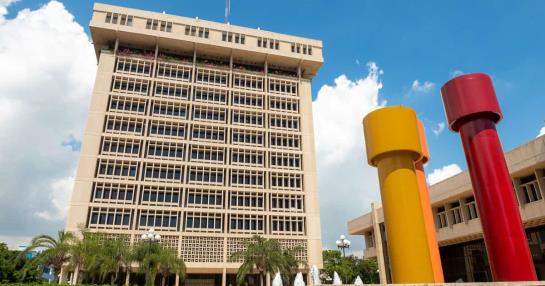The central bank from the Dominican Republic (BCRD), at its meeting of monetary politics of the month of January, decided to increase for the third consecutive time its interest rate of monetary politics.
The increase was 50 basis points, going from 4.50% to 5.00% annually. The entity explained that in this way the rate of the permanent liquidity expansion facility (Reposes 1 day) increases from 5.00% to 5.50% per year and the interest-bearing deposit rate (overnight) from 4.00% to 4.50% annually.
“This decision is based on an exhaustive evaluation of the behavior of the world economy, the greater persistence of inflationary pressures and the perspectives of international financial conditions,” said the issuing entity.
In that order, the agency explained that price dynamics continue to be affected by external shocks that are more permanent than expected, associated with higher oil prices and other important raw materials for local production, as well as the increase in the global cost of container transport and other disruptions in supply chains.
In particular, the BCRD detailed that the monthly variation of the consumer price index (CPI) in December was 0.73%, while year-on-year inflation at the end of 2021 was 8.50%.
On the other hand, it indicated that year-on-year core inflation, which excludes the most volatile components of the basket, reached 6.87% in December 2021, reflecting second-round effects on production associated with supply shocks.
Henceforth, the forecasting system of the central bank indicates that, in an active scenario of monetary politicsyear-on-year inflation would converge to the target range of 4% ± 1% during the horizon of monetary politicsslower than originally anticipated.
standardization plan monetary politics
The entity reiterated that its decision to increase the reference rate is part of the standardization plan monetary politics who is implementing the central bank with the purpose of moderating price shocks and contributing to the convergence of inflation to the target range, in a context of highly dynamic economic activity.
In that sense, this increase of 50 basic points in the interest rate monetary politicstogether with the increase of 150 basic points in the months of November and December, place the reference rate at 5.00% per annum.
Additionally, the BCRD establishes that it has significantly reduced the excess liquidity of the financial systemespecially through open market operations, to accelerate the transmission mechanism of the monetary politicswith the aim of attenuating additional inflationary pressures and preventing overheating of the economy from being generated in the future, which could cause an internal macroeconomic imbalance.
The central bank assured that it has the monetary tools to facilitate the inflation convergence to the goal and contribute to the maintenance of the macroeconomic stability, being prepared to take additional steps to achieve your goals.
international context
In the international environment, although the economic outlook remains positive, uncertainty related to the impact of COVID-19 and the increase in geopolitical tensions persist.
In this sense, in its most recent update of the World Economic Outlook, the International Monetary Fund (IMF) revised downwards the world growth forecasts for the current year 2022 from 4.9% to 4.4%.
“In U.S, our main trading partner, the economy expanded by 5.7% in 2021, projecting growth of 4.0% by 2022, according to the IMF,” said the central bank.
Meanwhile, inflation in that country reached 7.0% in December, the highest in almost four decades and more than three times above its 2.0% goal.
In this context, the Federal Reserve in its most recent meeting indicated that it would end its monthly financial asset purchase program in March and that it anticipates increases in the federal funds rate in the near future.
“The central bank of the Dominican Republic reaffirms its commitment to lead the monetary politics towards the achievement of its inflation target and the proper functioning of the financial and payment systems. In this sense, special monitoring will continue to be given to the macroeconomic environment and the evolution of inflationary pressures, with the purpose of adopting the necessary measures in the face of factors that may put price stability at risk”, he stressed.


















